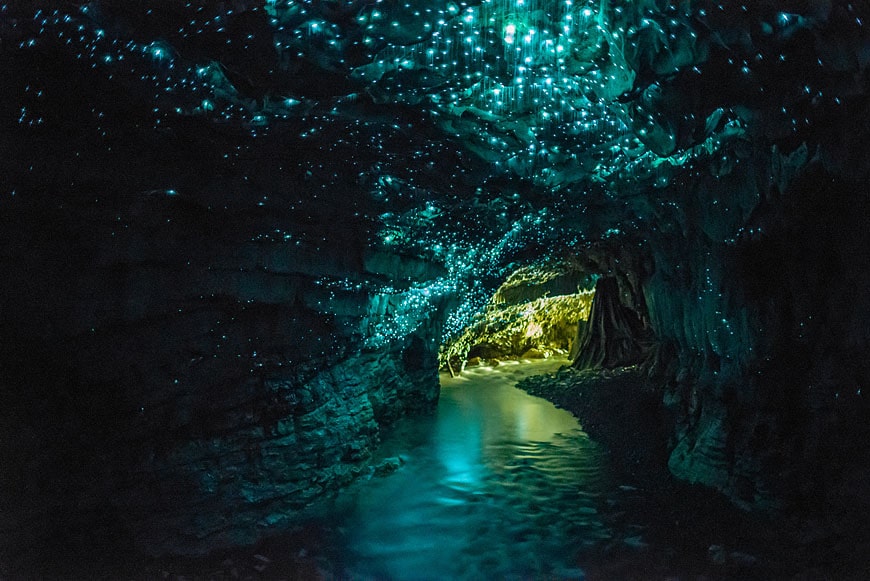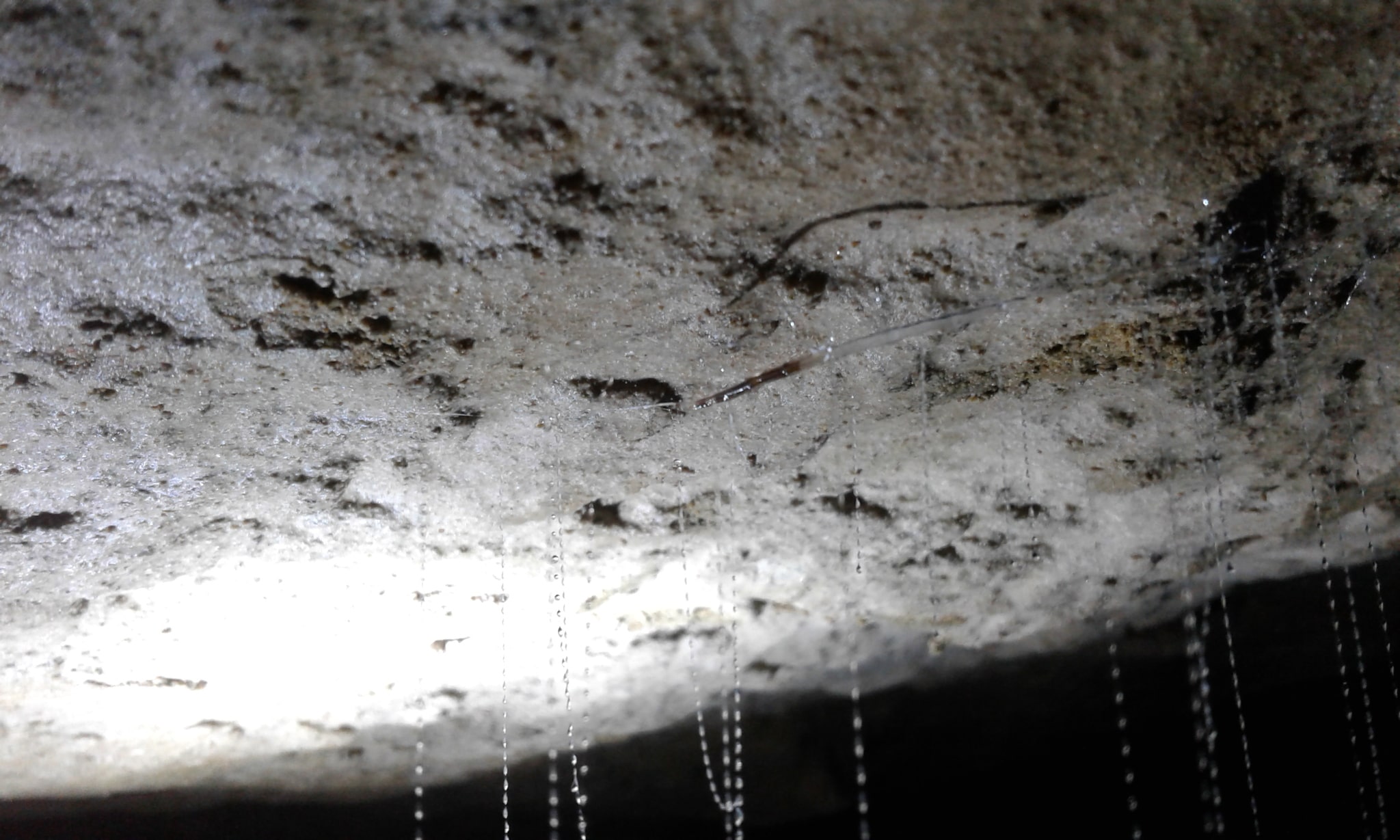 |
| Glowworm, Luminous Trap Making Insects (source) |
Glowworm, Luminous Trap Making Insects. Glowworm is the name for a worm-like animal that is given this name because of its ability to emit light. The so-called glowworm itself was not originally a worm, but the larvae of a small insect called a gnat.
There are several animal species that bear the title glowworm, but in this article I will discuss the glowworm of the Arachnocampa luminosa species.
Glowworm, Luminous Trap Making Insects
Glowworm of the species A. luminosa can only be found in New Zealand, especially in caves and natural tunnels. Hence, the glowworms of this species are also known as New Zealand glowworms or New Zealand fungus gnats.
 |
| Glowworm, Luminous Trap Making Insects |
The indigenous Maori tribe themselves dubbed the glowworm according to the name titiwai. In Europe, the name glowworm is more often used to refer to firefly larvae which are completely unrelated to A. luminosa.
Of the many places glowworms are found, one of the most famous habitats for glowworms is Waitomo Caves, which are located on the North Island of New Zealand.
Because on the ceiling of this majestic cave, there are so many glowworms that nest there that it looks like a collection of stars in the night sky.
Besides being able to see it on foot, visitors to Waitomo Cave can also look up at the ceiling while riding a boat because this cave also has an underground river.
Return to glowworms. In the previous paragraph, it was stated that the original glowworm was the larval stage of a gnat insect whose appearance resembled a long-legged mosquito.
 |
| Glowworm, Luminous Trap Making Insects |
Gnats undergo a complete metamorphosis phase, meaning that throughout their life, gnats experience egg, larva, pupa, and adult insect phases.
The time it takes for a mosquito to go through its entire life cycle is nearly a year. A gnat spends its entire life cycle in a cave.
If a female gnat has mated with a male gnat, the female gnats will go to the mossy ceiling of the cave to lay their eggs there. Each egg is less than 1 mm in size.
After about three weeks, the eggs will hatch into larvae which are none other than glowworms. When newly hatched, glowworms are only less than 5 mm thick. However, as it eats more food, the same glowworm can grow up to 3 centimeters long.
Read More: About the Forensic Entomology Process, Solving Cases with the Help of Insects
Glowworm has a long brownish body with transparent skin. Therefore, the glowworm's glow organ located near the tip of its tail can remain visible even under the skin.
The glowworm organ glow comes from the substance luciferin which is produced by an organ called the Malphigi tubule. The glowworm's body is very soft, but its head is hard textured and is equipped with jaws to bite its prey.
 |
| Glowworm, Luminous Trap Making Insects |
Glowworms build nests on the ceiling of the cave using threads that are expelled from their bodies. Apart from using their threads to make nests, glowworms also make strands that hang around their nests.
Each strand of thread can be up to 40 cm long and up to 70 strands of thread. On each strand, there are a few drops of the sticky liquid that glowworms use to trap their prey.
Light of Death
Glowworms are passive hunting animals that use their light organs to lure their prey. The hungrier the glowworm is, the brighter the glow will be.
When exposed to light, the sticky liquid droplets on the glowworm thread will also reflect the light so that the glowworm thread strands look like sparkling beads.
When small insects such as moths are attracted to the light, they will stick to the sticky liquid in the threads and get trapped there.
When the poor insects try to escape, the vibrations they cause will attract the attention of glowworms waiting in their nests. The glowworm that senses the vibration will then pull the thread up by eating the thread until its prey is within its reach.
After eating the prey, the glowworm will temporarily dim its light. Apart from eating flying insects that are attracted to light, glowworms also eat small animals such as snails and small centipedes.
If food is scarce, glowworms will also want to eat other glowworms. This is why the nests made by glowworms tend to be far apart from each other.
Glowworms can only live in dark, windless habitats such as in caves so that the sticky threads created by the glowworms are not blown off and then ensnare the glowworms themselves.
Another reason glowworms prefer windless habitats is so that the parasitic fungus Tolypocladium that infects glowworms does not easily spread through the wind.
During this phase, the glowworm or fungus gnats larvae molt four times. When they are 6 to 9 months old, glowworms will enter the pupal phase.
Glowworm Videos
Meanwhile, in this phase, the gnat cocoons are vulnerable to becoming victims of the parasitic wasp Betyla fulva which lays eggs in the gnat cocoons.
When the eggs hatch, the wasp larvae will eat the contents of the gnat cocoons and automatically kill them. However, if gnats can safely pass through the cocoon phase, the cocoons will hatch into adult insects after two weeks.
The most interesting thing about mature fungus gnats is that they never eat because they don't have a mouth. This in itself can occur because the task of adult fungus gnats is only to mate and reproduce.
Adult fungus gnats can have enough energy to fly and find a mate because they rely on the food reserves they collect while still in the larval or glowworm phase.
However, because they cannot eat to increase their energy reserves, adult fungus gnats only live a maximum of five days.
Adult fungus gnats show sexual dimorphism, aka physical differences between the sexes. If the male has a slender and thin belly, then the female has a belly that looks a little chubby.
Females also have a size slightly larger than males. Whereas the male generally only has a maximum length of 1.1 cm, the female can grow to a length of 1.3 cm. Like the larval phase, adult fungus gnats also emit light. However, that light only appeared occasionally.
Another difference between male and female fungus gnats is also seen in the pupal phase. The male and female cocoons emit blue light. However, if the light of the male cocoons gets dimmer over time, then the light of the female cocoons will get brighter.
The reason female cocoons emit such bright light is to make it easier for males to find their true self. It is not uncommon for female fungus gnats to come out of their cocoons, there are already several male gnats waiting for them.
By: Ochie














0 comments